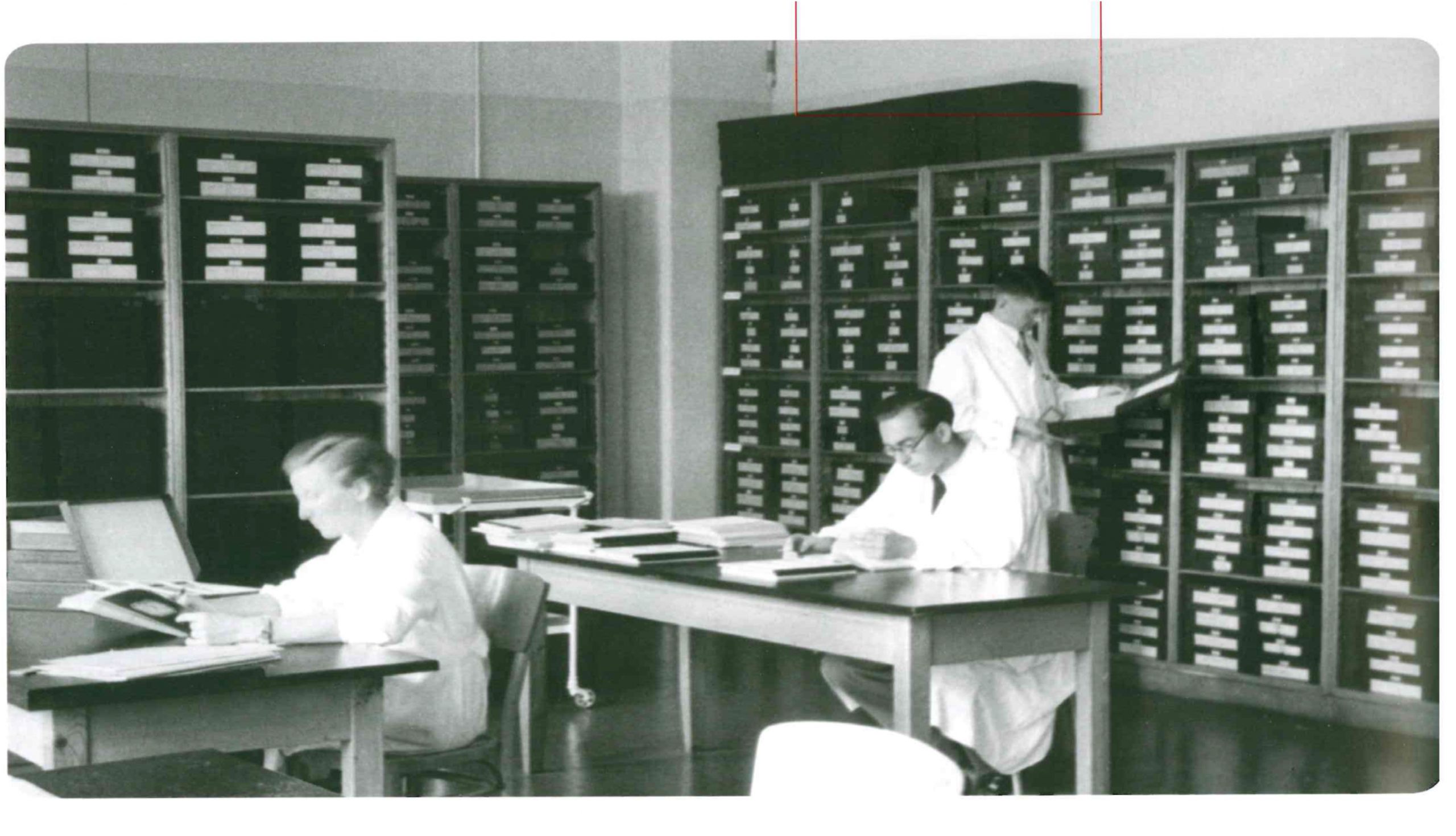Brain Research at Institutes of the Kaiser Wilhelm Society in the Context of National Socialist Injustice: Brain preparations in institutes of the Max Planck Society and the identification of victims.
 Brain Pathology Institute of the DFA
Brain Pathology Institute of the DFA
On July 1, 2017, the collaborative project "Brain Research at Institutes of the Kaiser Wilhelm Society in the Context of National Socialist Injustice: Brain preparations in institutes of the Max Planck Society and the identification of victims". The research project is located at the Medical University of Vienna (subproject leader: Prof. Dr. Herwig Czech), Oxford Brookes University and the Leopoldina - National Academy of Sciences (subproject leader: Prof. Dr. Paul Weindling) and at the Institute of History and Ethics of Medicine (subproject leader: Philipp Rauh).
The project analyzes the origin of brain preparations that reached institutes of the Kaiser Wilhelm Society or the Max Planck Society during the National Socialist era or the postwar period. The women and men from whom the preparations originated are to be examined with regard to their status as possible victims of National Socialism. The main question is whether the specimens originate from victims of Nazi "euthanasia". Biographical data will be collected on the persons concerned and, in selected cases, more detailed biographies will be prepared.
Partner
- University of Vienna (Subproject leader: Prof. Dr. Herwig Czech)
- Oxford Brookes University
- Leopoldina - National Academy of Sciences (Project leader: Prof. Dr. Paul Weindling)
Subproject
The guiding question for the subproject at the Institute for History and Ethics of Medicine at the Technical University of Munich is the following: Which persons whose brains entered the collection of the then German Research Institute for Psychiatry (today: Max Planck Institute for Psychiatry) must be regarded as victims of Nazi "euthanasia"? Furthermore, it should be traced which institutions in the "Third Reich" sent preparations to the German Research Institute and for what purpose. Were there specific research interests in this context? Were brains of persons with certain diseases specifically requested? Finally, it is also a question of the extent to which preparations from the Nazi era were used for teaching and research at the Max Planck Institute for Psychiatry. In which research projects, not only during but also after the Second World War, were the preparations included and which publications are based on neuropathological research on Nazi victims?
A total of about 1,500 brain specimens were sent to the German Research Institute of Psychiatry in Munich from more than 70 different institutions between 1939 and 1945. It received most of the brains from psychiatric institutions in Bavaria. At the German Research Institute, the preparations were then examined in the Brain Pathology Institute headed by Willibald Scholz and used for research.
Central to the verification of the victim status is the consultation of various contemporary sources, especially patient files from the Nazi era. In order to clarify the identities of possible victims of Nazi "euthanasia" and also to be able to reconstruct the network of neuropathological research, a project database was conceived. The database documents all brain specimens received by the German Research Institute between 1939 and 1945. It contains basic biographical data on the persons concerned, their relatives, psychiatric treatment, and the possible selection criteria that led to the selection. The manner of death is also documented and data on brain removal, the further path of the specimens and the research carried out on them are included.
At the end of the project, there will be a memorial book about all the women and men who were victims of unethical research at the Kaiser Wilhelm Institutes. A monograph of the results is also planned.
Philipp Rauh, M.A.
Tel.: +49 89 4140 4041
Mail: philipp.rauh@tum.de
Ismaninger Street 22, 81675 Munich
Project Management:
Philipp Rauh, M.A.
Period:
01.07.2017–30.06.2026
Project Type:
Joint project
Funding source:
Max Planck Society